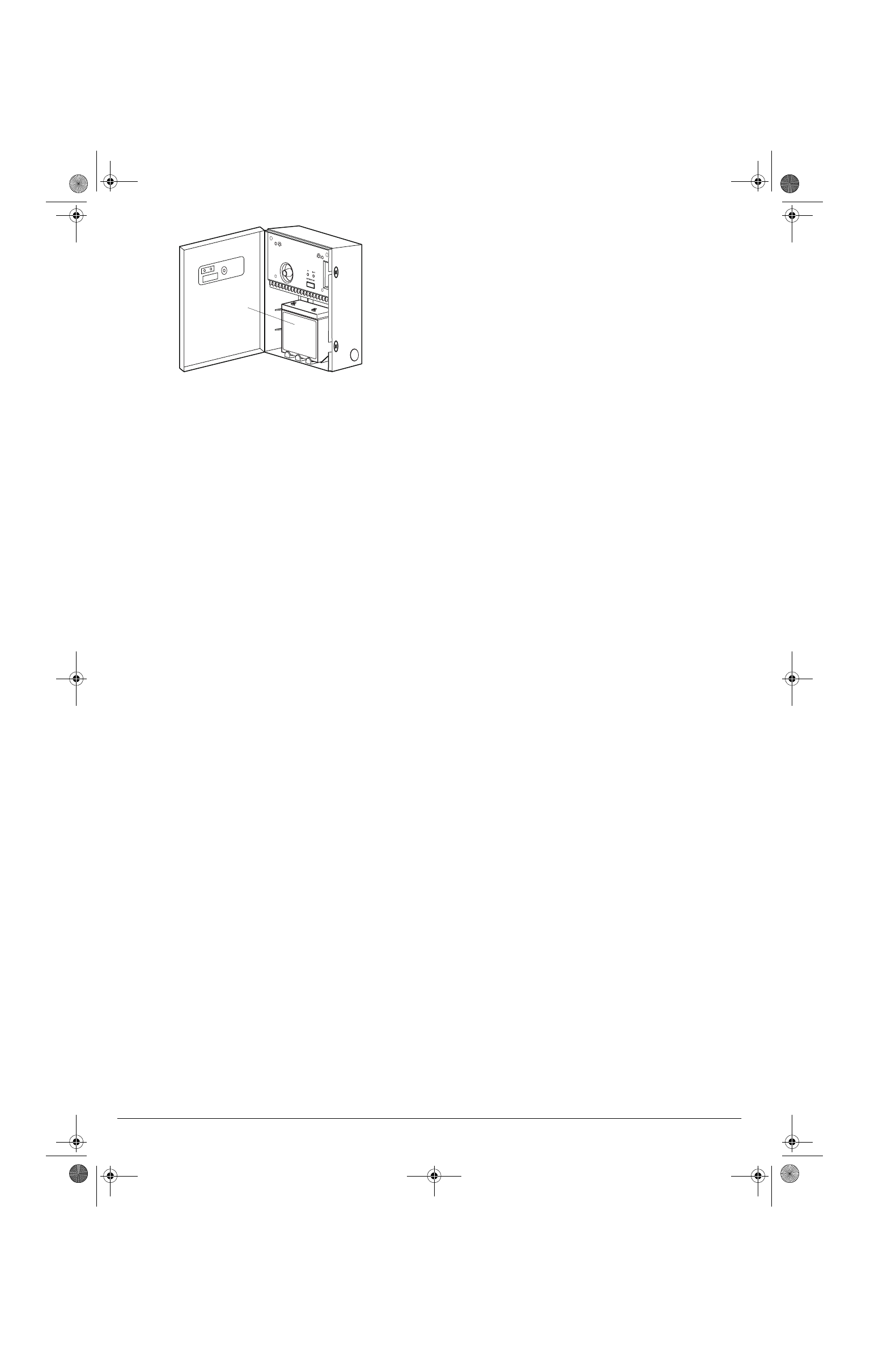
10
Preparation
Choosing a Location for the Remote Keypad
The remote keypad supplied with your alarm system lets you
arm and disarm the system, change the system’s operation,
and see status information about the system. You can also
purchase up to three additional keypads to use with your
alarm system.
• Mount the remote keypads in a location where all family
members who will use them can reach them.
• For many installations, it is best to mount the remote
keypads near the main entry of your home.
• The remote keypad supplied with your alarm system is
not weatherproof. Do not install it in a location where it
will be exposed to excessive moisture.
• The remote keypads should not be mounted in a loca-
tion where they are exposed to temperatures outside the
range of 32–122° F.
CHOOSING THE COMPONENTS
Sensors
Sensors are the eyes and ears of your alarm system. When
activated, they send a signal to your alarm center that acti-
vates the alarm. Your local RadioShack store carries a full
line of sensors.
Sensors are usually classified into two types:
Perimeter Sensors
— These sensors protect areas such as
doors and windows. Types of perimeter sensors include
door and window contacts, window foil, glass-breakage de-
tectors, and infrared photorelays.
Area Sensors
— Types of area sensors include ultrasonic
and infrared motion detectors, vibration detectors, and panic
buttons and tamper switches. You can place area sensors
such as motion detectors in wide areas such as your living
room, or in access areas such as halls. You can place panic
buttons just about anywhere.
Decide which entrances or areas an intruder would be most
likely to use, and place sensors at those entrances or areas
first.
The sensors you can connect to the alarm system should be
either normally-open (NO) or normally-closed (NC) for the
Delay Zone and Instant Zone, but only normally-open for the
Panic/Tamper Zone.
Normally-Open Sensors
— stop electricity from flowing
when not activated. When activated, a normally-open sensor
completes the electrical path and signals the alarm center to
sound the alarm.
Normally-Closed Sensors
— allow electricity to flow when
not activated. When activated, normally-closed sensors
break the electrical path and signal the alarm center to
sound the alarm.
Notes:
• You cannot mix normally-open and normally-closed sen-
sors within one loop.
• Normally-closed sensors are considered more secure
than normally-open sensors.
• Unless otherwise noted, you need two-conductor hook-
up wire to connect the sensors to the alarm center.
• Refer to your RadioShack catalog for specific types and
catalog numbers of each sensor listed here.
The most common types of sensors are:
Magnet Switches —
Magnet switches are available in both
normally-open and normally-closed types. When mounted, a
magnet switch either opens or closes when the object it is
attached to is moved, signaling the alarm center to sound
the alarm. You can use magnet switches for doors, win-
dows, or anywhere you want the alarm to sound when
something is moved.
Plunger (Contact) Switches —
Plunger switches are avail-
able in both normally-open and normally-closed types. You
can install a plunger switch inside a door frame on the side
with the hinges. This type of switch cannot be seen when the
door is closed. You can use plunger switches for doors, win-
dows, or any where you want the alarm to sound when
something is opened or moved.
Metallic Foil Tape
— Metallic foil tape is a normally-closed
type of sensor. Install metallic foil tape on the glass just in-
side the outer frame of windows that are not movable, such
as plate glass or glass inserts in doors. If the glass is broken,
the tape also breaks and signals the alarm center to sound
the alarm. Mount metallic foil tape around the perimeter of
the glass, then connect it to a normally-closed circuit.
Vibration Detectors —
Vibration detectors are available in
both normally-open and normally-closed types. When these
sensors detect vibration on any surface, they signal the
alarm center to sound the alarm.
Glass Breakage Detectors —
Glass breakage detectors
are a type of vibration detector and are available in both nor-
mally-open and normally-closed types. You attach a glass
breakage detector near a window. If the window is broken or
struck, the glass breakage detector signals the alarm center
to sound the alarm.
Motion Detectors —
The most common types of motion de-
tectors are:
•
Ultrasonic
— Send out an inaudible high-frequency
sound, which bounces off objects in the protected area
and returns to the sensor. When an object moves in the
Battery
49-454.fm Page 10 Wednesday, January 17, 2001 10:37 AM


















